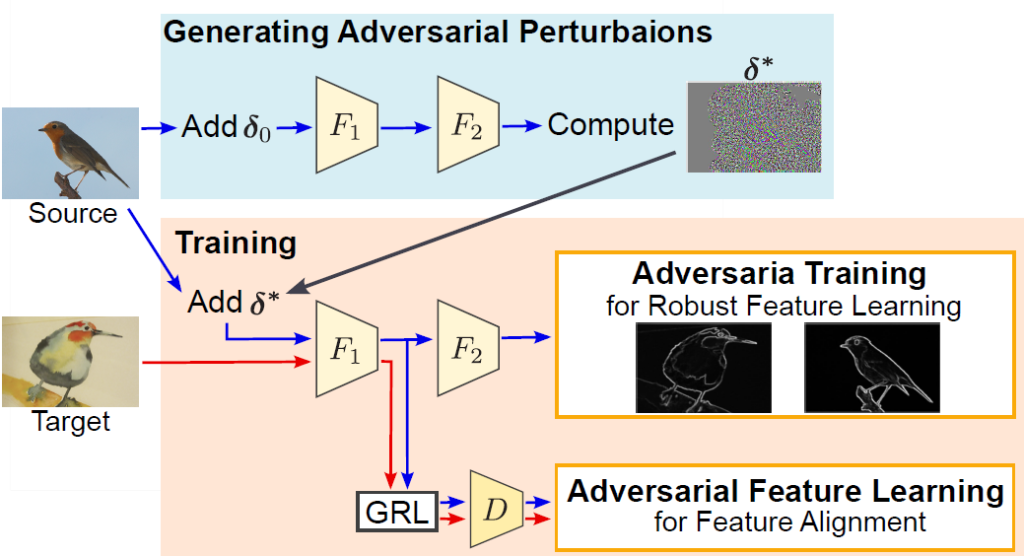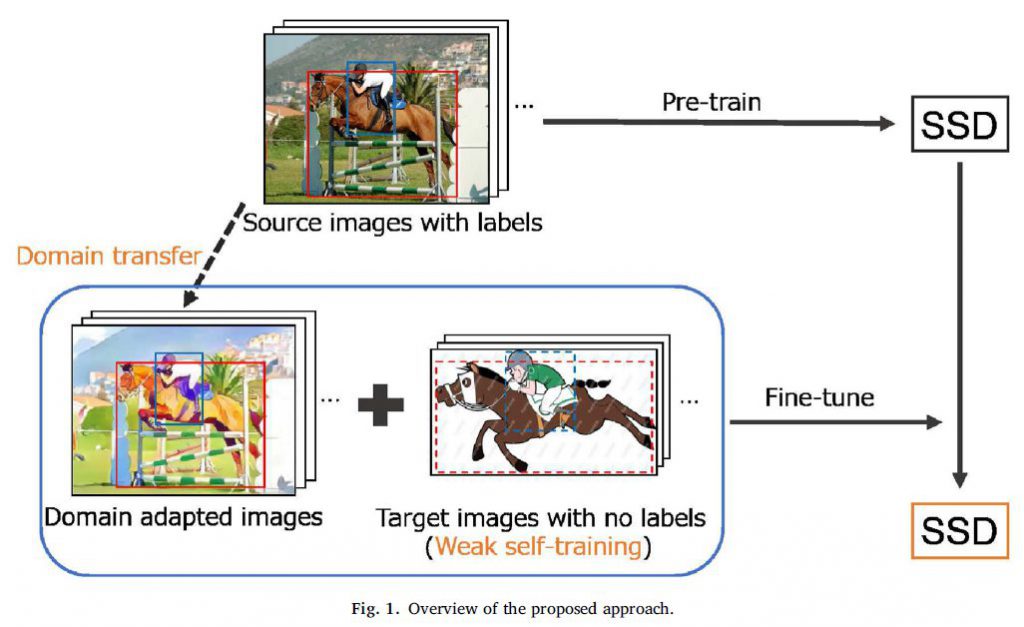Domain Adaptation by Adversarial Training
Unsupervised domain adaptation, which involves transferring knowledge from a label-rich source domain to an unlabeled target domain, can be used to substantially reduce annotation costs in the field of object detection. In this study, we demonstrate that adversarial training in the source domain can be employed as a new approach for unsupervised domain adaptation. Specifically, we establish that adversarially trained detectors achieve improved detection performance in target domains that are significantly shifted from source domains. This phenomenon is attributed to the fact that adversarially trained detectors can be used to extract robust features that are in alignment with human perception and worth transferring across domains while discarding domain-specific non-robust features. In addition, we propose a method that combines adversarial training and feature alignment to ensure the improved alignment of robust features with the target domain. We conduct experiments on four benchmark datasets and confirm the effectiveness of our proposed approach on large domain shifts from real to artistic images. Compared to the baseline models, the adversarially trained detectors improve the mean average precision by up to 7.7%, and further by up to 11.8% when feature alignments are incorporated. Although our method degrades performance for small domain shifts, quantification of the domain shift based on the Frechet distance allows us to determine whether adversarial training should be conducted.

Kazuma Fujii, Hiroshi Kera, and Kazuhiko Kawamoto, Adversarially Trained Object Detector for Unsupervised Domain Adaptation, IEEE Access, vol. 10, pp. 59534-59543, 2022 [paper].
Domain Adaptation for One-Stage Object Detection
Unsupervised cross-domain object detection has recently attracted considerable attention because of its ability to significantly reduce annotation costs. For two-stage detectors, several improvements have been made in feature-level adaptations. However, this approach is not suitable for one-stage detectors that do not have access to instance-level features. Although other approaches are often used for one-stage detectors, their performance is insufficient compared to domain adaptation methods for two-stage detectors. In this study, we propose a generative and self-supervised domain adaptation method for one-stage detectors. The proposed method is composed of an adversarial generative method and a self-supervision-based method. We tested our method on three evaluation datasets, and an improvement in the mean average precision was achieved using this method. We also confirmed the complementary effects of an adversarial generative method and a self-supervision-based method.

Kazuma Fujii and Kazuhiko Kawamoto, Generative and self-supervised domain adaptation for one-stage object detection, Array, Vol. 11, 2021 [paper].
